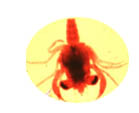 |
  |
 |
  |
|
|
The Importance of Estuaries and Marshes Description and Instructions: This is a question and answer exercise that is a useful illustration of the importance of estuaries and marshes. This is designed to be a lesson that can be thrown together on short notice, using materials that most people have around the house. The presenter simply chooses an item (listed below) and asks the class how that represents an estuary or marsh. There may be many right answers, and it is important that the presenter expands on answers to give students a better understanding of the importance of estuaries and marshes. Grade Level: 3rd to 12th (although it can be adapted to almost any age level). Materials Needed And How They Represent Estuaries: Pacifier: Estuaries act as nurseries to many fish and invertebrate species, providing protection that may not be provided by the open ocean or other habitats. Sponge: Estuaries act as a sponge, soaking up excess water during hurricanes and flooding. Pledge or other cleaning product: Estuaries filter or clean water that is making its way to the ocean. Food Product of some kind: Estuaries are home to many species of animal that are important food sources for humans and other animals. In North Carolina and along the east coast of the US, estuaries are home to the blue crab, an important food source. Toy Bird: Estuaries and Marshes are rich with organisms that are not marine or aquatic, including birds, who use North Carolina's marshes as stopovers during north-south migrations. Toy Boat: Estuaries provide areas for humans to enjoy the outdoors, being ideal places for water sports such as boating and fishing. Basket or other type of container: Because of the nature and richness of estuaries, they can hold (like a basket) many plants and animals. They have the capacity to hold a much greater diversity of species than the same area of many other types of habitats (open ocean for instance). **This list is by no means all inclusive. This lesson is designed to be effective whether you use all or some of these materials. The important part of the exercise is that students are thinking critically about how estuaries and marshes are important to wildlife and humans, and any other materials you find that may achieve this goal are perfectly okay. Post Activity Assessment: After the activity it is important that the presenter assess the effectiveness of the lesson by trying to guage the class's understanding of estuaries and marshes. An easy way to do this, and bring the lesson to a close, is to finish by asking a question similar to "What do you think life would be like if we filled and paved all of our estuaries and marshes?".
Back to Lesson Plans
|